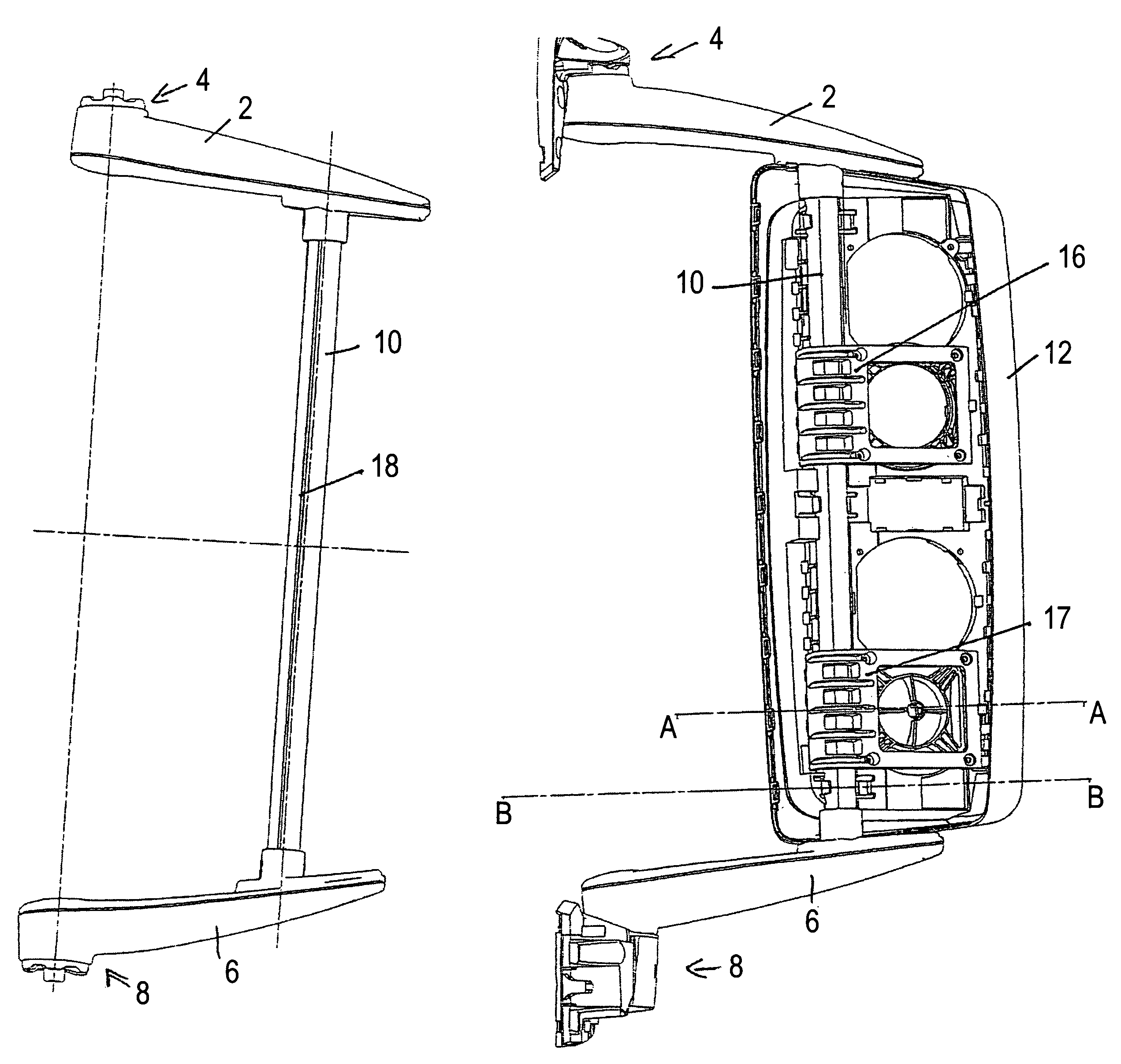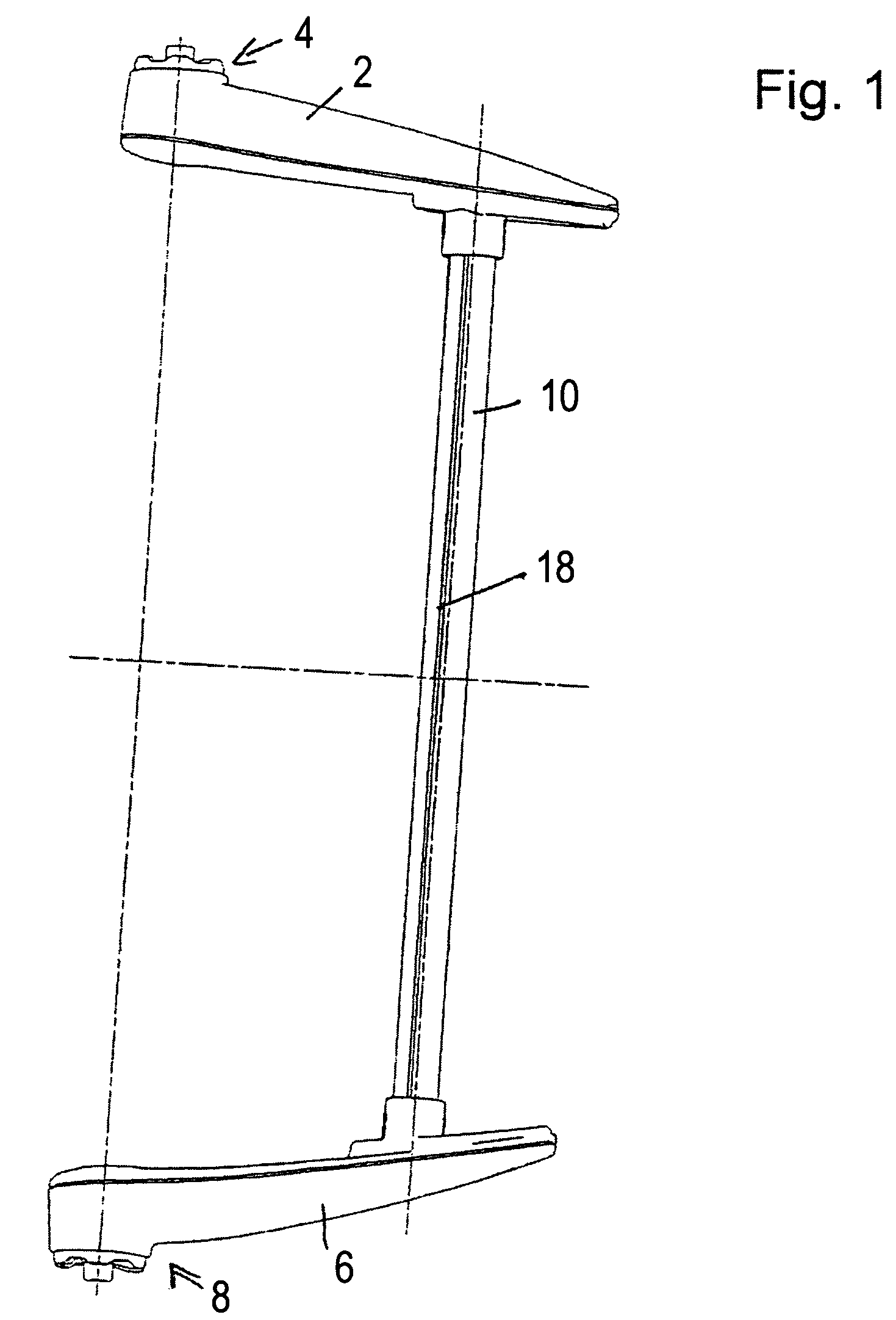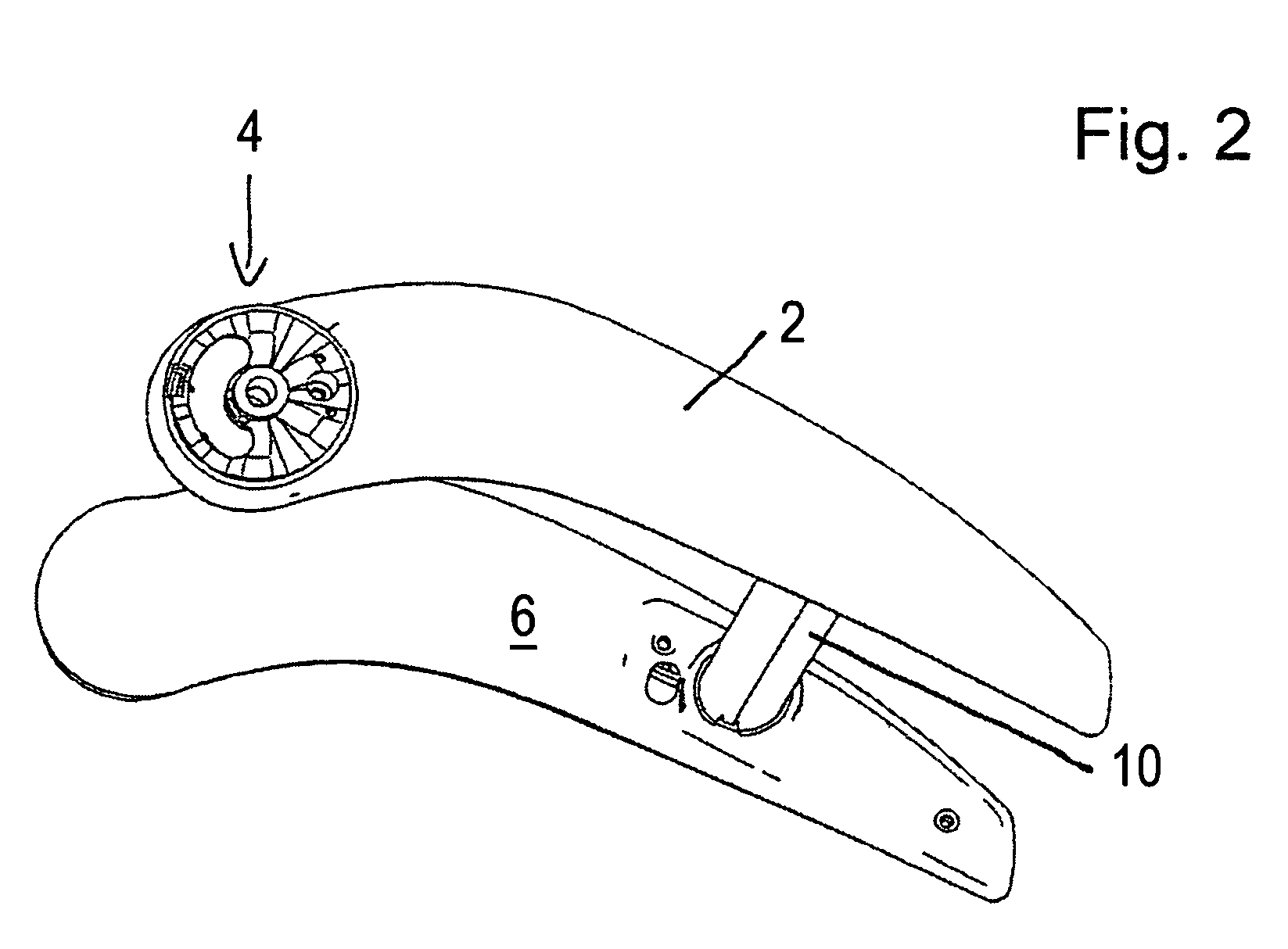Vehicle mirror support assembly with cast brace
a technology for supporting assemblies and mirrors, which is applied in the direction of machine supports, instruments, other domestic objects, etc., can solve the problems of disadvantageous weight, yoke, and not the best aerodynamic design of construction, and achieves the effects of improving structural strength, light weight, and satisfying stability
- Summary
- Abstract
- Description
- Claims
- Application Information
AI Technical Summary
Benefits of technology
Problems solved by technology
Method used
Image
Examples
Embodiment Construction
[0024]Referring now in more detail to the drawings, the invention will now be described in more detail.
[0025]FIGS. 1 and 2 present, as viewed, left or right driven vehicle arrangements for a mirror support assembly, which include an upper support arm 2. Upper support arm 2 has on its end which contacts the vehicle body (not shown), an upper mounting element 4 for pivotally anchoring the upper support arm to the vehicle. Further, the upper mirror support arm 2 in FIGS. 1, 2 has a lower support arm 6 which, on its end, is proximal to the vehicle body (not shown) has, in like manner, a lower mounting element 8 for pivotally anchoring the lower arm to the vehicle body. The upper and the lower mounting elements 4, 8 are constructed as frictionally restrained, pivotal fixtures, parts of which are shown in the FIGS. 1 and 2.
[0026]The upper support arm 2 and the lower support arm 6 are united together by mirror head brace 10, which is hollow in design. This head brace, although tubular, is ...
PUM
 Login to View More
Login to View More Abstract
Description
Claims
Application Information
 Login to View More
Login to View More - R&D
- Intellectual Property
- Life Sciences
- Materials
- Tech Scout
- Unparalleled Data Quality
- Higher Quality Content
- 60% Fewer Hallucinations
Browse by: Latest US Patents, China's latest patents, Technical Efficacy Thesaurus, Application Domain, Technology Topic, Popular Technical Reports.
© 2025 PatSnap. All rights reserved.Legal|Privacy policy|Modern Slavery Act Transparency Statement|Sitemap|About US| Contact US: help@patsnap.com



